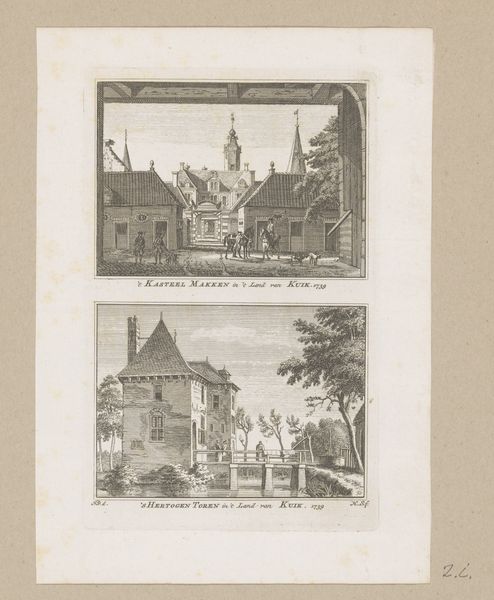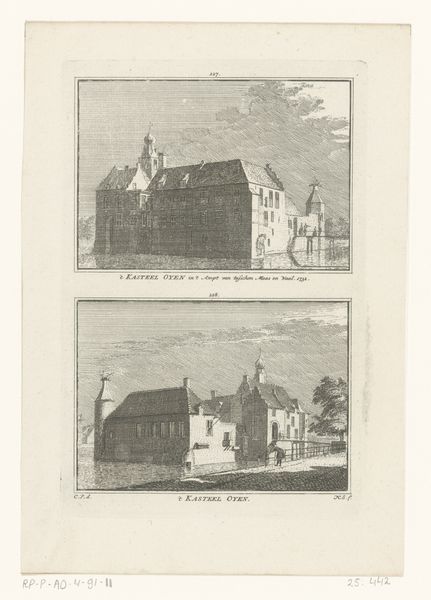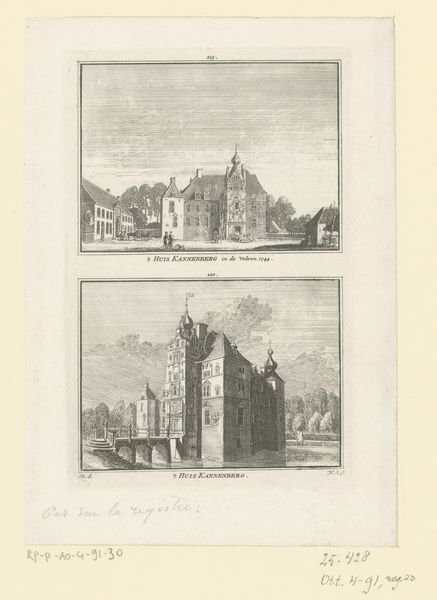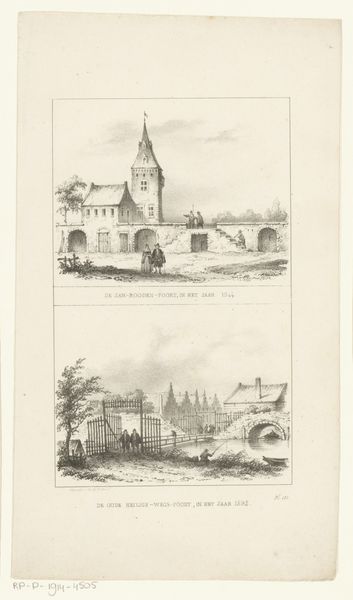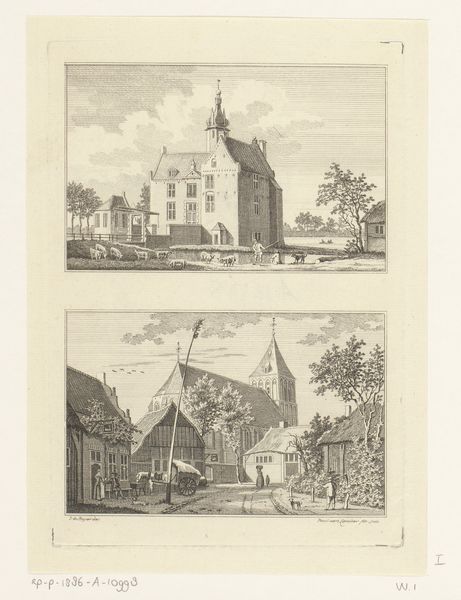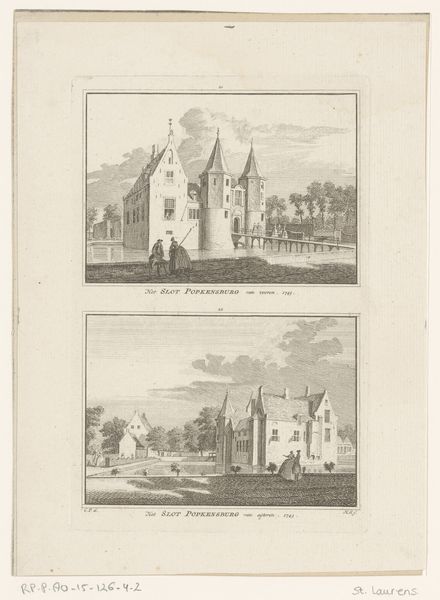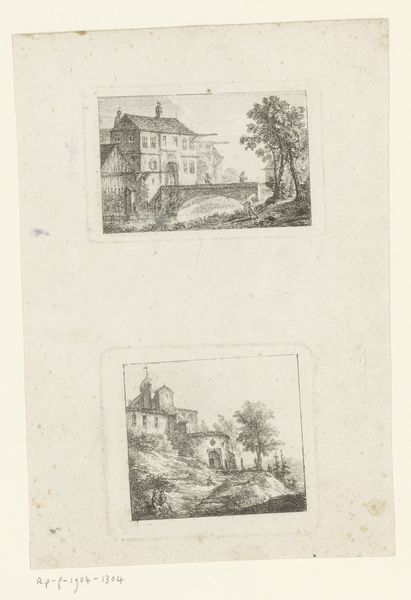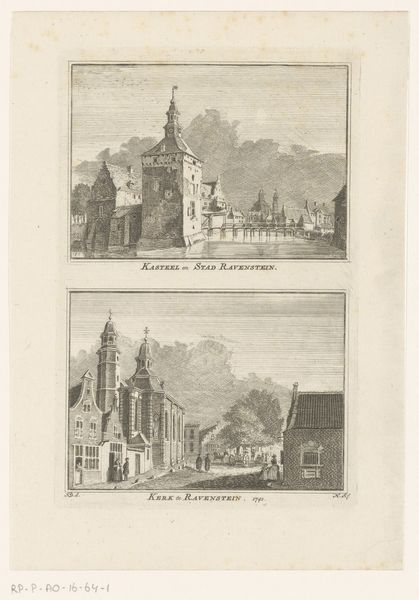
print, etching
# print
#
etching
#
landscape
#
perspective
#
romanticism
#
cityscape
Dimensions: height 275 mm, width 195 mm, height 222 mm, width 125 mm
Copyright: Rijks Museum: Open Domain
Editor: Here we have Carel Christiaan Antony Last's "Oude Delftse Poort te Rotterdam," dating somewhere between 1818 and 1876. It’s a print, an etching, showing two views of city gates in Rotterdam. I'm struck by the contrasts between the heavy architecture and the stillness of the water. How do you read this image? Curator: As a materialist, I immediately focus on the etching process. Consider the labor involved in creating these intricate lines and textures, and then reproducing them en masse. It’s not just about representing a romantic landscape; it’s about the democratizing potential of printmaking, of circulating images of Rotterdam’s urban fabric and its relation to trade. What social purpose would these images have served at the time? Editor: I hadn’t thought of it like that! I was just thinking about the romantic style. Curator: And the Romantic style is vital! It is not just the surface image but an ideological projection dependent on and enabled by a mode of mechanical reproduction, connecting both cultural ideals and the labour needed to disseminate those ideals to a wider public through commodity culture. The etcher creates a picturesque view that's marketable. The printing trades are expanding around this time. Editor: So, you are suggesting that Romanticism could spread further and faster because the printing methods enabled it to? Curator: Exactly! This etching transforms buildings that facilitated trade, or provided defense, into nostalgic objects of visual consumption. We must consider what kind of labor supported the making of these images and who was the target audience. Do you find clues of that audience within the frame itself? Editor: It makes me reconsider the role of art in society, less as pure aesthetics and more as a product of, and a contributor to, the social and economic landscape. Curator: Precisely! Seeing the interplay between artistic creation, industrial production, and consumerism, unlocks many of its hidden levels.
Comments
No comments
Be the first to comment and join the conversation on the ultimate creative platform.

